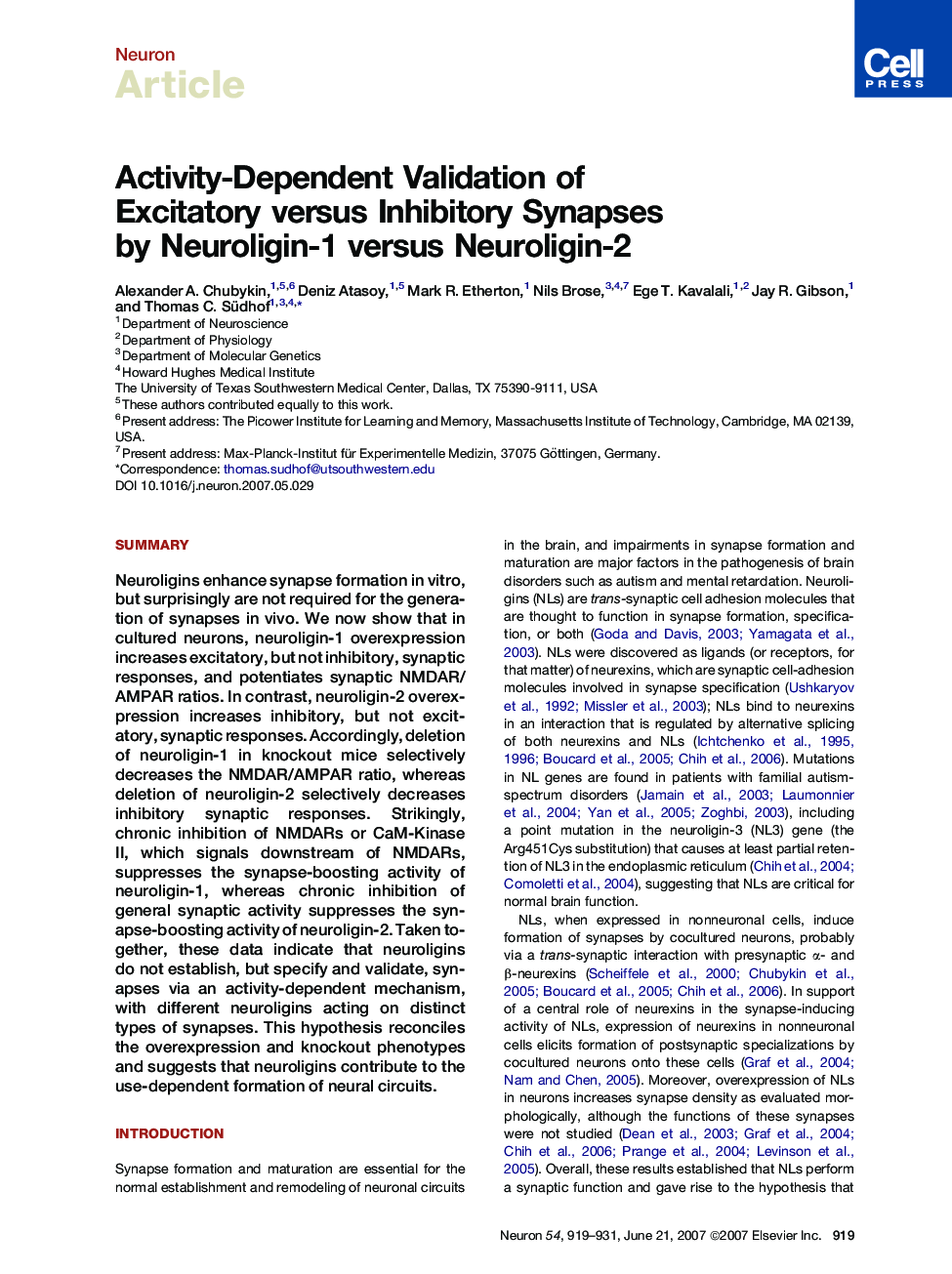| Article ID | Journal | Published Year | Pages | File Type |
|---|---|---|---|---|
| 4323219 | Neuron | 2007 | 13 Pages |
SummaryNeuroligins enhance synapse formation in vitro, but surprisingly are not required for the generation of synapses in vivo. We now show that in cultured neurons, neuroligin-1 overexpression increases excitatory, but not inhibitory, synaptic responses, and potentiates synaptic NMDAR/AMPAR ratios. In contrast, neuroligin-2 overexpression increases inhibitory, but not excitatory, synaptic responses. Accordingly, deletion of neuroligin-1 in knockout mice selectively decreases the NMDAR/AMPAR ratio, whereas deletion of neuroligin-2 selectively decreases inhibitory synaptic responses. Strikingly, chronic inhibition of NMDARs or CaM-Kinase II, which signals downstream of NMDARs, suppresses the synapse-boosting activity of neuroligin-1, whereas chronic inhibition of general synaptic activity suppresses the synapse-boosting activity of neuroligin-2. Taken together, these data indicate that neuroligins do not establish, but specify and validate, synapses via an activity-dependent mechanism, with different neuroligins acting on distinct types of synapses. This hypothesis reconciles the overexpression and knockout phenotypes and suggests that neuroligins contribute to the use-dependent formation of neural circuits.
